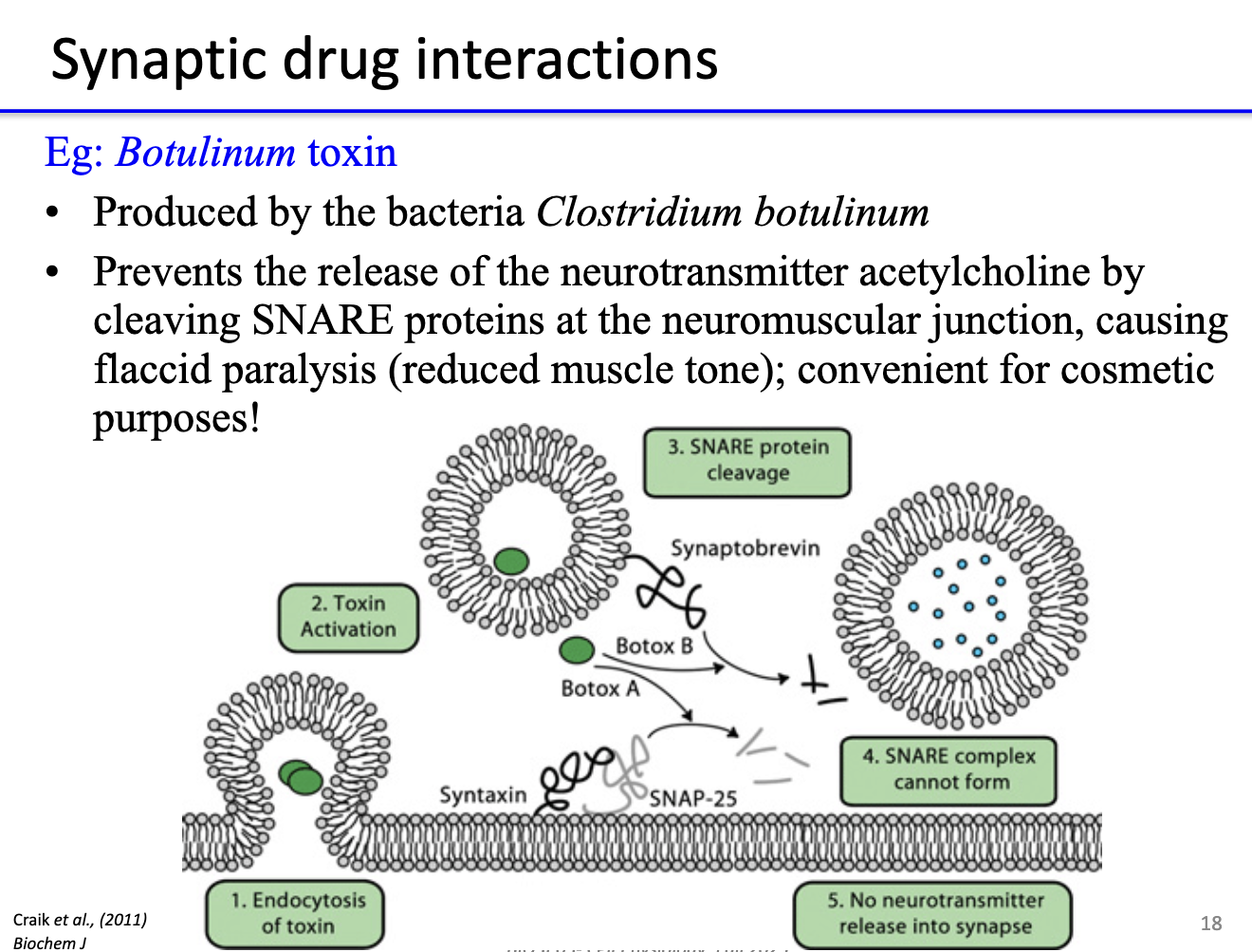15. Synaptic Integration Part 2 - The Role of Neurotransmitters
1/14
There's no tags or description
Looks like no tags are added yet.
Name | Mastery | Learn | Test | Matching | Spaced |
|---|
No study sessions yet.
15 Terms
What happens at excitatory and inhibitory synapses during the patellar reflex?
Patellar (knee-jerk) reflex involves both excitation and inhibition.
Excitation: Ia sensory neuron activates α-motor neuron → quadriceps contract.
Inhibition: same Ia sensory neuron activates inhibitory interneuron → inhibits α-motor neuron to hamstrings, preventing antagonist contraction.
Ensures coordinated movement (one muscle contracts while the opposite relaxes).
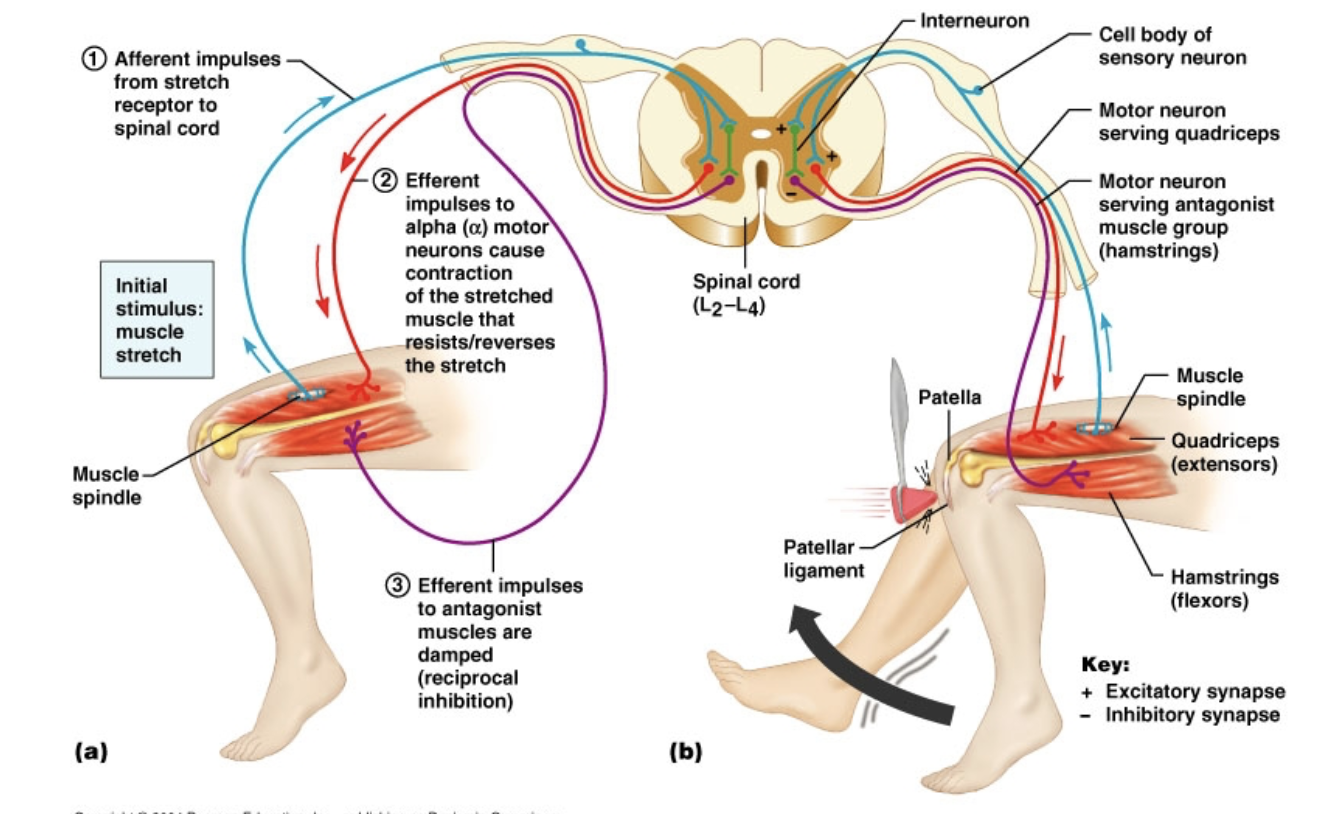
Where do depolarization and hyperpolarization occur in the patellar reflex circuit?
Depolarization:
Between Ia sensory neuron and α-motor neuron for quadriceps.
Between sensory neuron and inhibitory interneuron that affects hamstring motor neuron.
Hyperpolarization:
Between inhibitory interneuron and α-motor neuron to hamstrings.
Allows coordinated contraction and relaxation of opposing muscles.
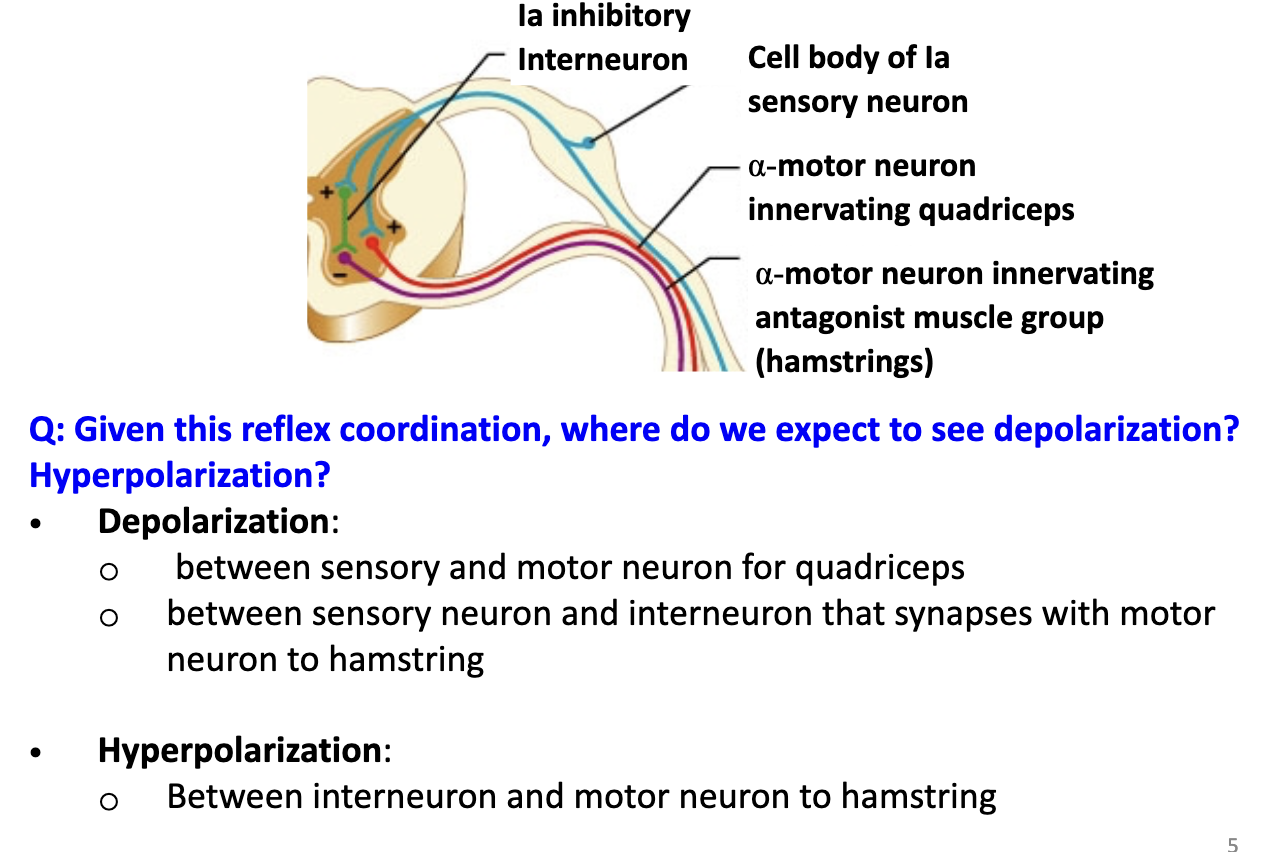
Which neurotransmitters are involved in coordinating excitation and inhibition in the patellar reflex?
Glutamate:
Released by Ia sensory neurons at excitatory synapses.
Activates α-motor neurons to quadriceps and interneurons.
Glycine:
Released by inhibitory interneurons in the spinal cord.
Inhibits α-motor neurons to hamstrings (antagonist).
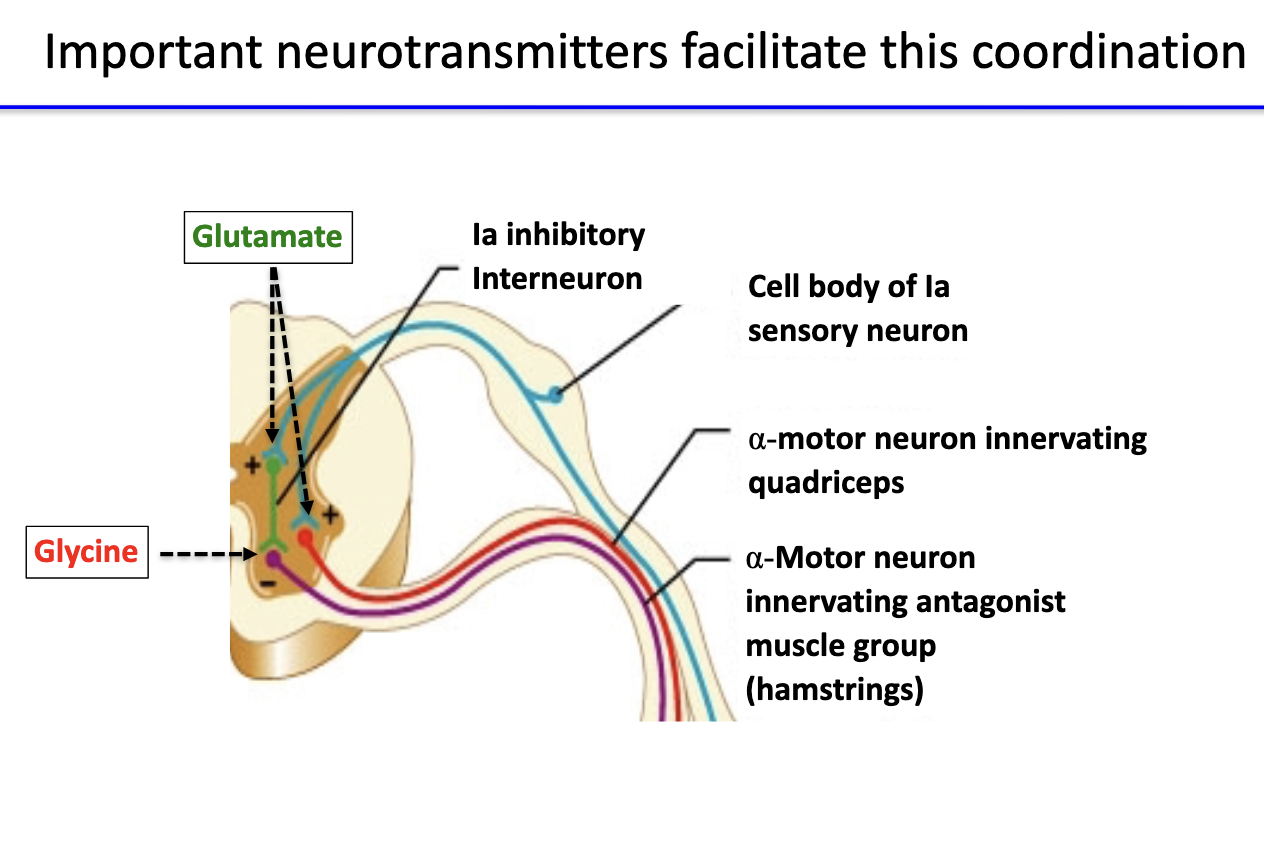
What are the key structural features of a synapse seen under electron microscopy?
Presynaptic active zone: site of neurotransmitter release.
Postsynaptic density: region containing receptors, directly across from active zone.
Synaptic cleft: space between pre- and postsynaptic membranes.
Synaptic vesicles: store high concentrations of neurotransmitters, released into cleft upon activation.
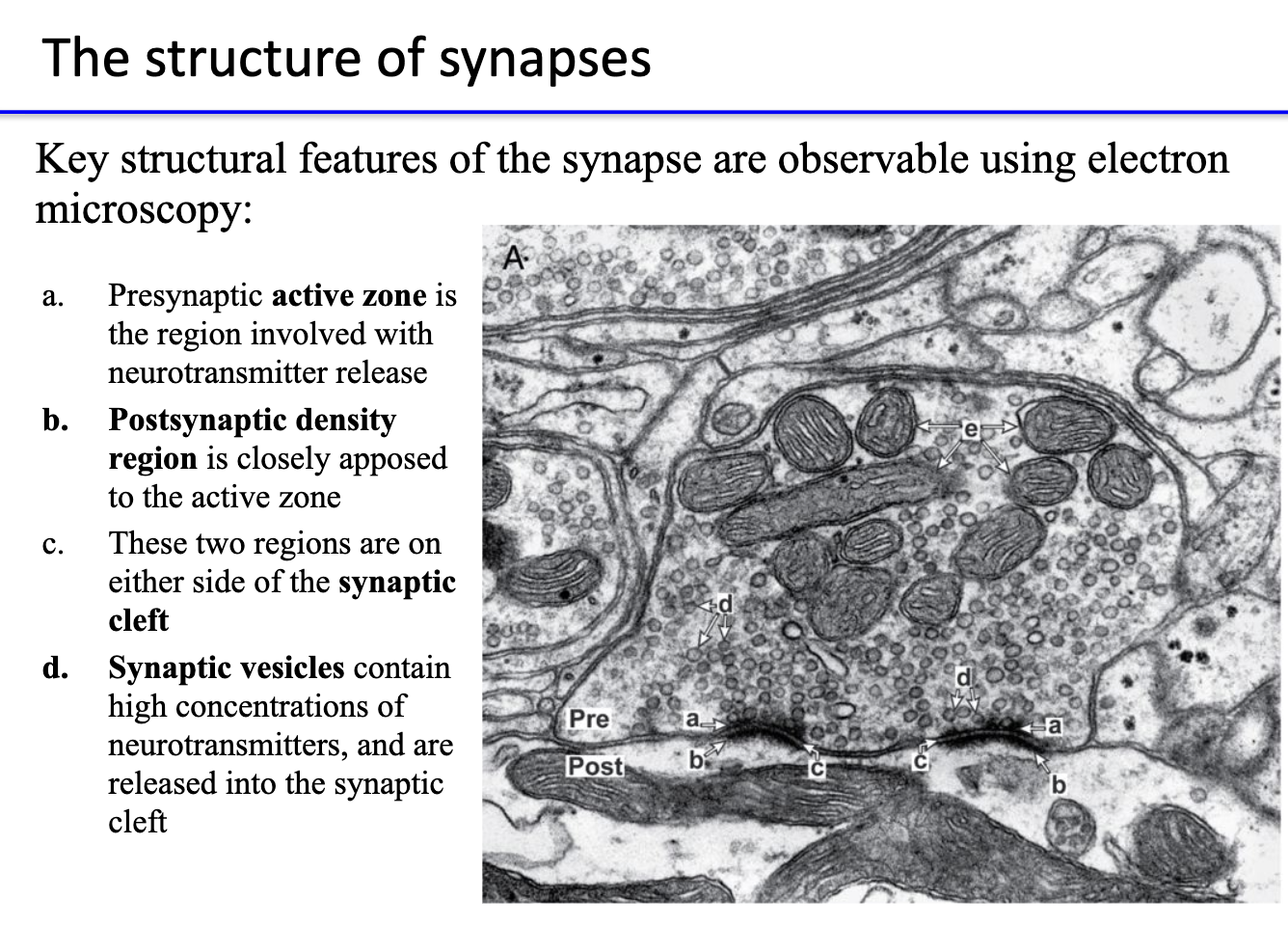
What are the four main criteria for classifying a neurotransmitter?
Synthesized in the presynaptic neuron.
Present in terminal and released in sufficient amounts to affect postsynaptic cell.
When applied externally, mimics the natural transmitter’s action (same receptors/pathways).
Has a specific removal mechanism from synaptic cleft (e.g., reuptake or degradation).
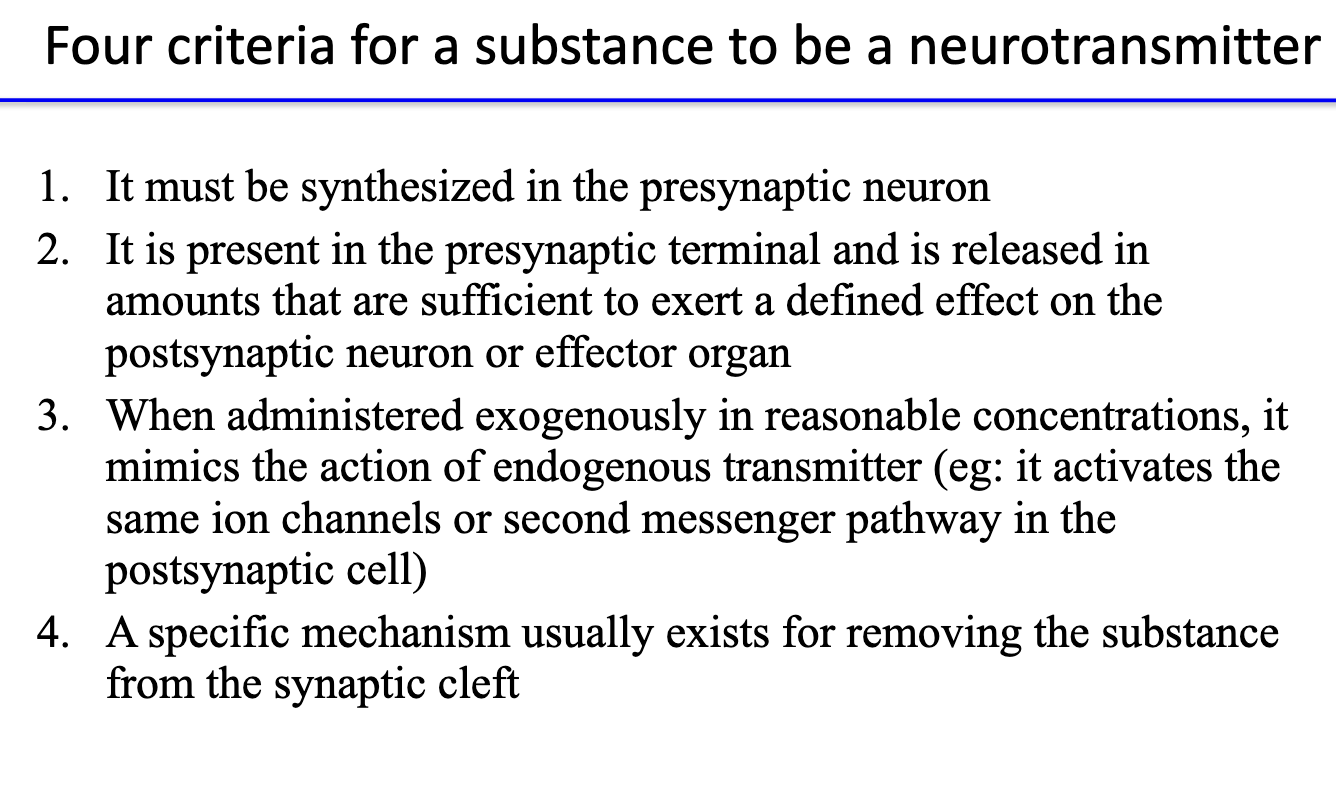
What are small-molecule neurotransmitters?
Include acetylcholine, glutamate, GABA, glycine, dopamine, serotonin, norepinephrine.
Typically rapid-acting.
Synthesized locally in axon terminals.
Mediate fast synaptic transmission.
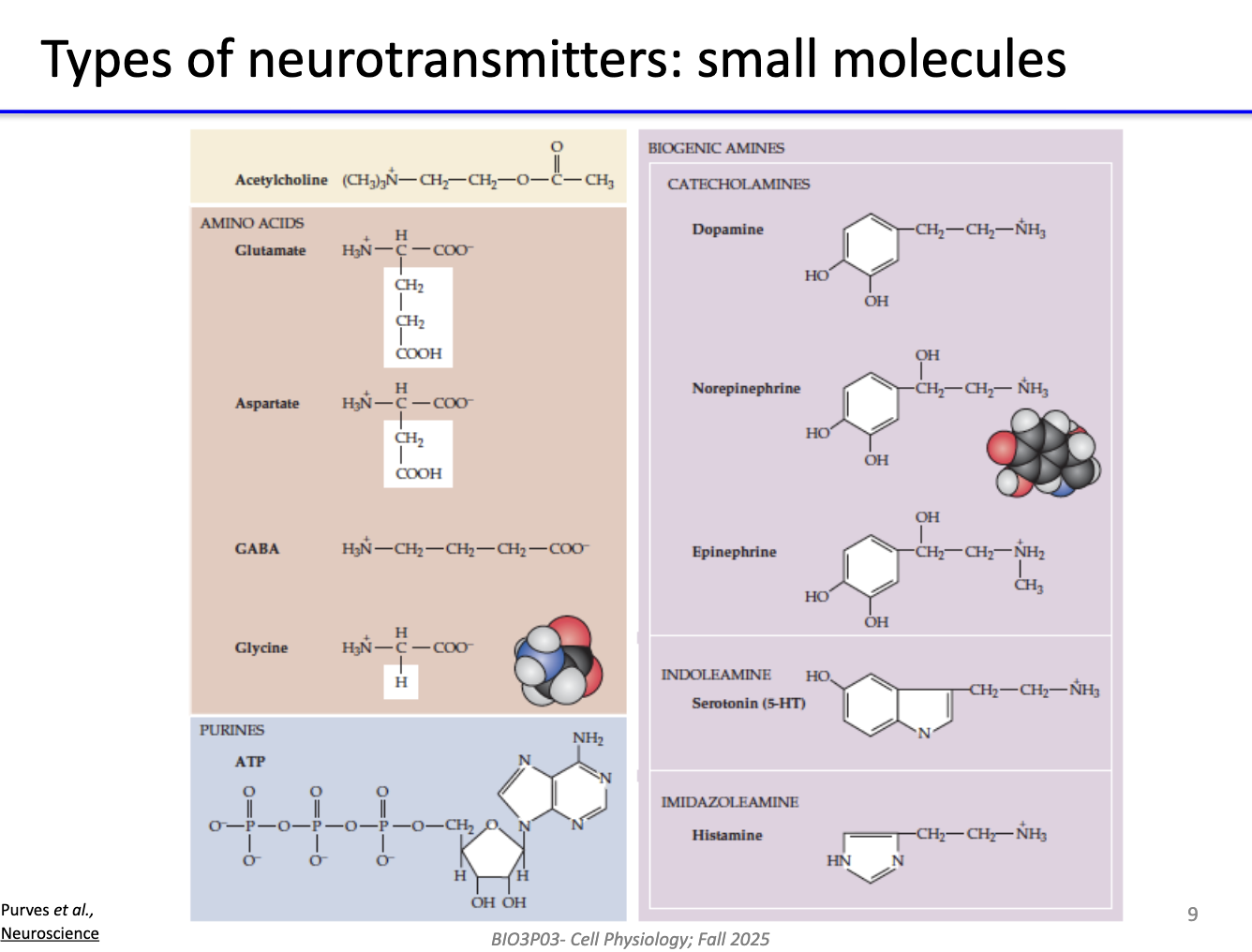
What are peptide neurotransmitters and their general features?
Short chains of amino acids (e.g., substance P, endorphins, oxytocin, vasopressin).
Synthesized in cell body, packaged into vesicles, and transported to terminals.
Usually modulate slower, longer-lasting synaptic effects.
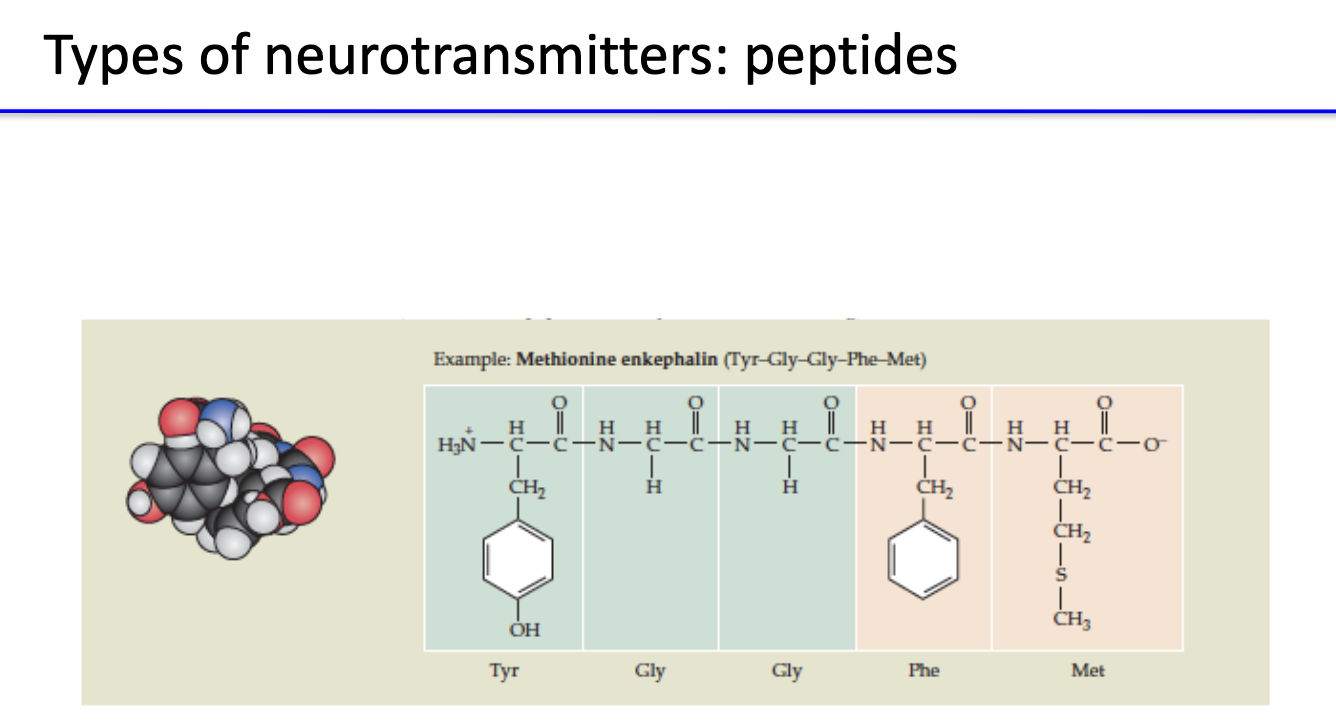
Where are small-molecule and peptide neurotransmitters synthesized?
Small-molecule neurotransmitters: synthesized at nerve terminals by local enzymes.
Peptide neurotransmitters: synthesized in cell body along with modifying enzymes → transported down axon.
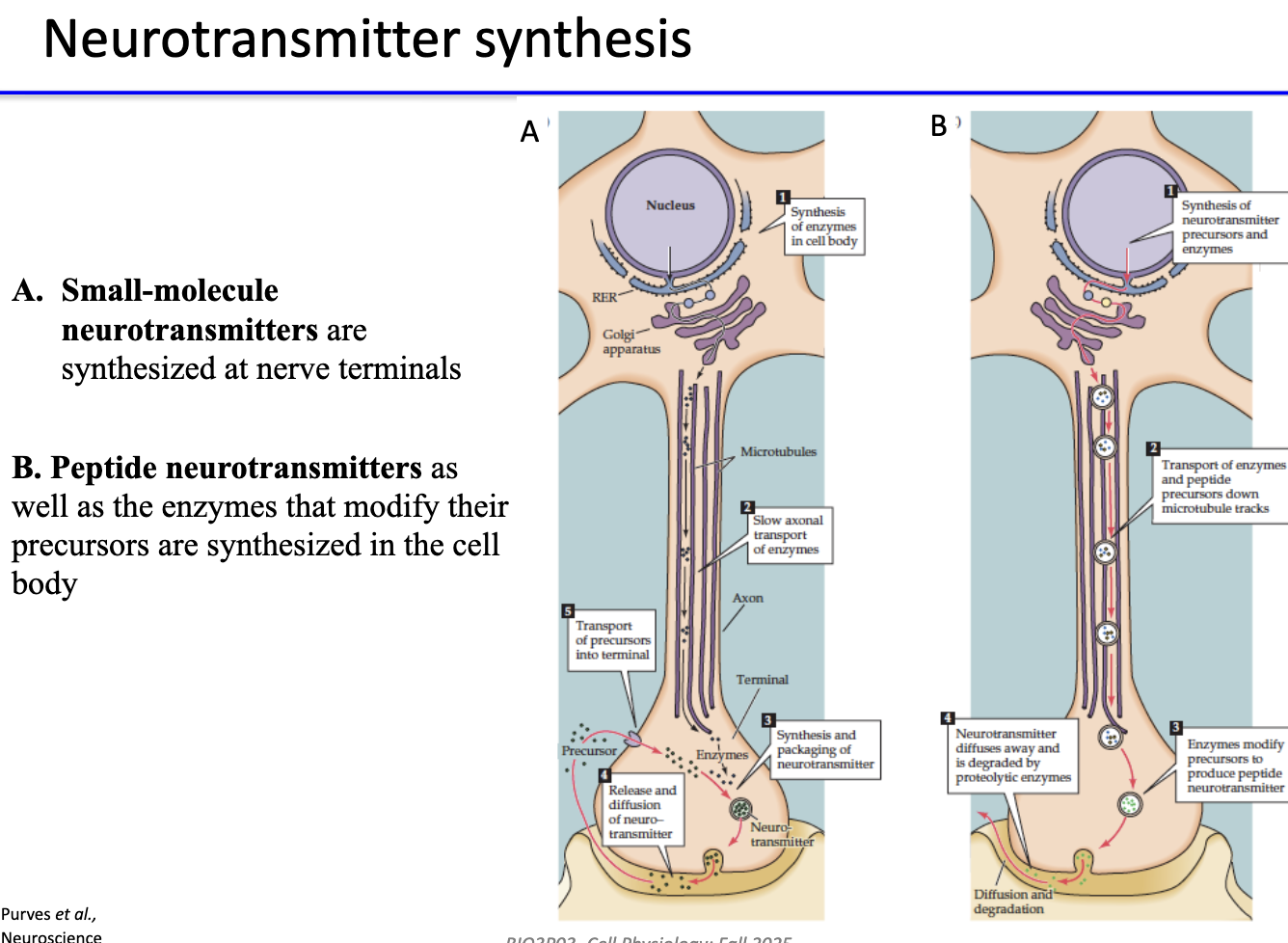
How is neurotransmitter release controlled at the presynaptic active zone?
Release via exocytosis controlled by SNARE complex.
Priming phase: SNAREs partially zippered; complexin clamps them.
Action potential → Ca²⁺ influx → synaptotagmin binds Ca²⁺ + phospholipids + SNAREs → triggers vesicle fusion & pore opening → neurotransmitter released.

How do receptors mediate the effects of neurotransmitters in spinal circuits?
Glutamate receptors: on α-motor neurons to quadriceps → excitatory depolarization.
Glycine receptors: on α-motor neurons to hamstrings → inhibitory hyperpolarization.
Together, they coordinate excitation and inhibition for proper reflex response.
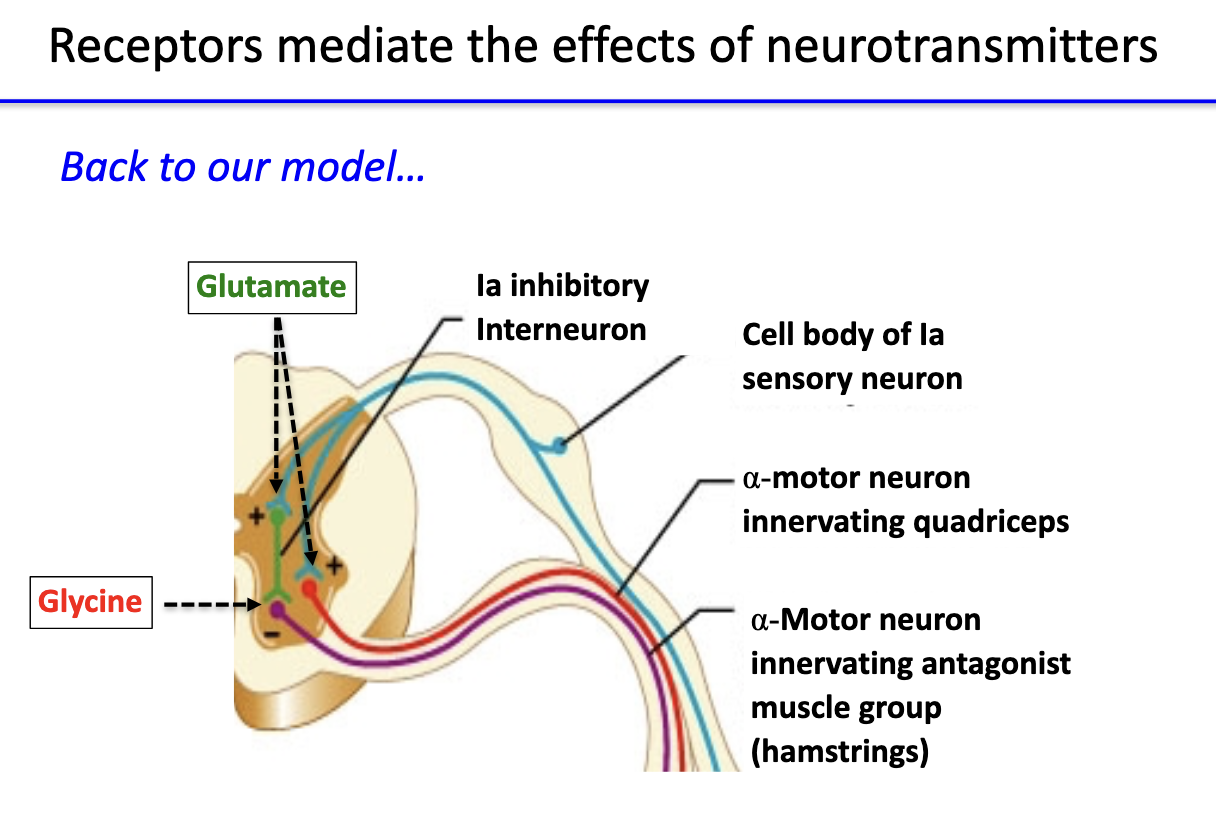
How does glutamate produce excitatory synaptic transmission?
Acts on ionotropic receptors: AMPA, kainate, NMDA (and some metabotropic).
AMPA & kainate: allow Na⁺ in, K⁺ out → EPSP (Na⁺ dominates).
NMDA: requires glutamate + glycine + depolarization to remove Mg²⁺ block → allows Na⁺ & Ca²⁺ influx.
Ca²⁺ acts as an intracellular messenger, influencing plasticity and signaling.
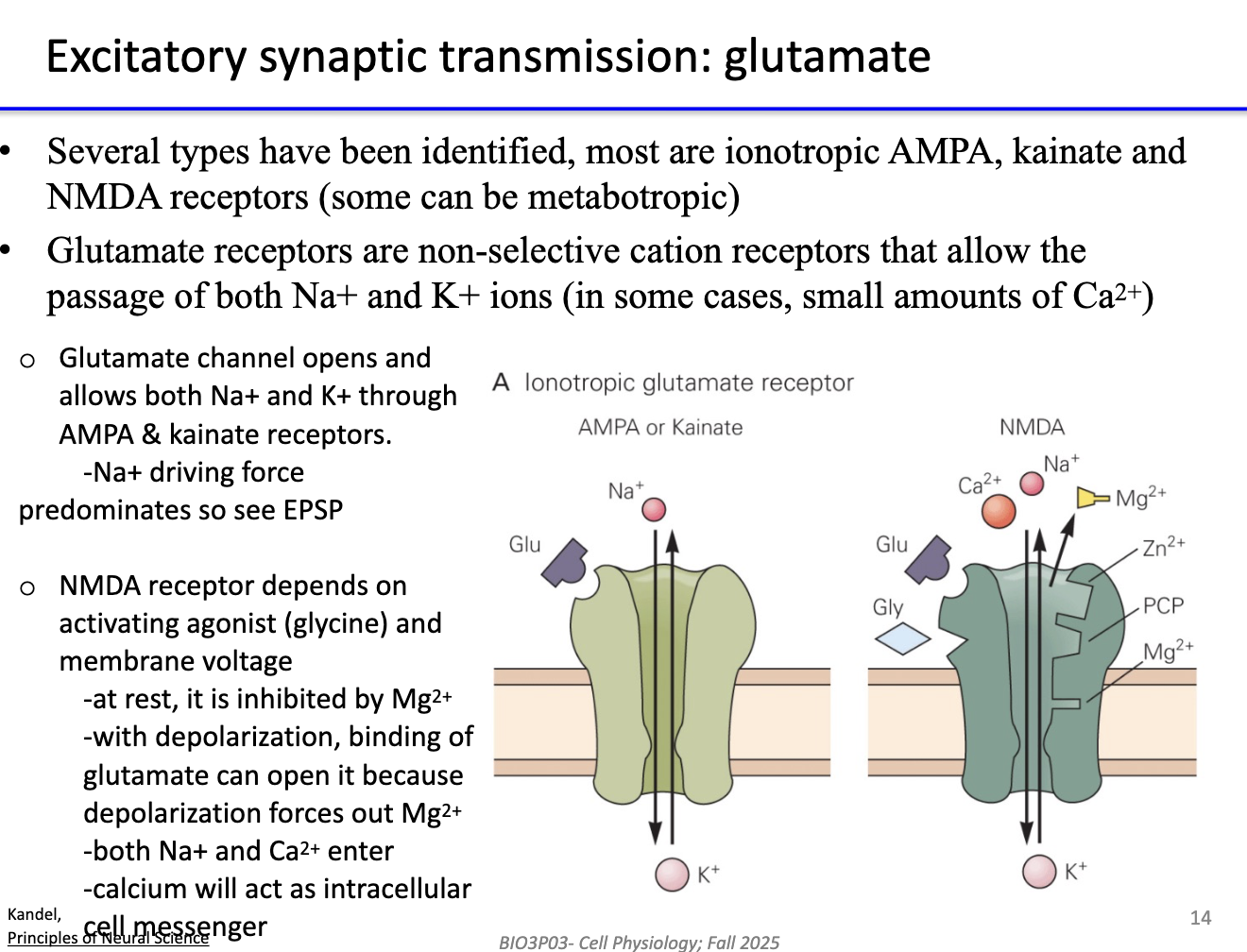
How do glycine and GABA mediate inhibitory synaptic transmission?
Glycine: major inhibitory transmitter in spinal cord; opens Cl⁻ channels via ionotropic receptors → hyperpolarization.
GABA: major inhibitory transmitter in brain; acts on
GABAᴀ: ionotropic → opens Cl⁻ channels.
GABAʙ: metabotropic → activates K⁺ channels or inhibits Ca²⁺.
Both decrease neuronal excitability.
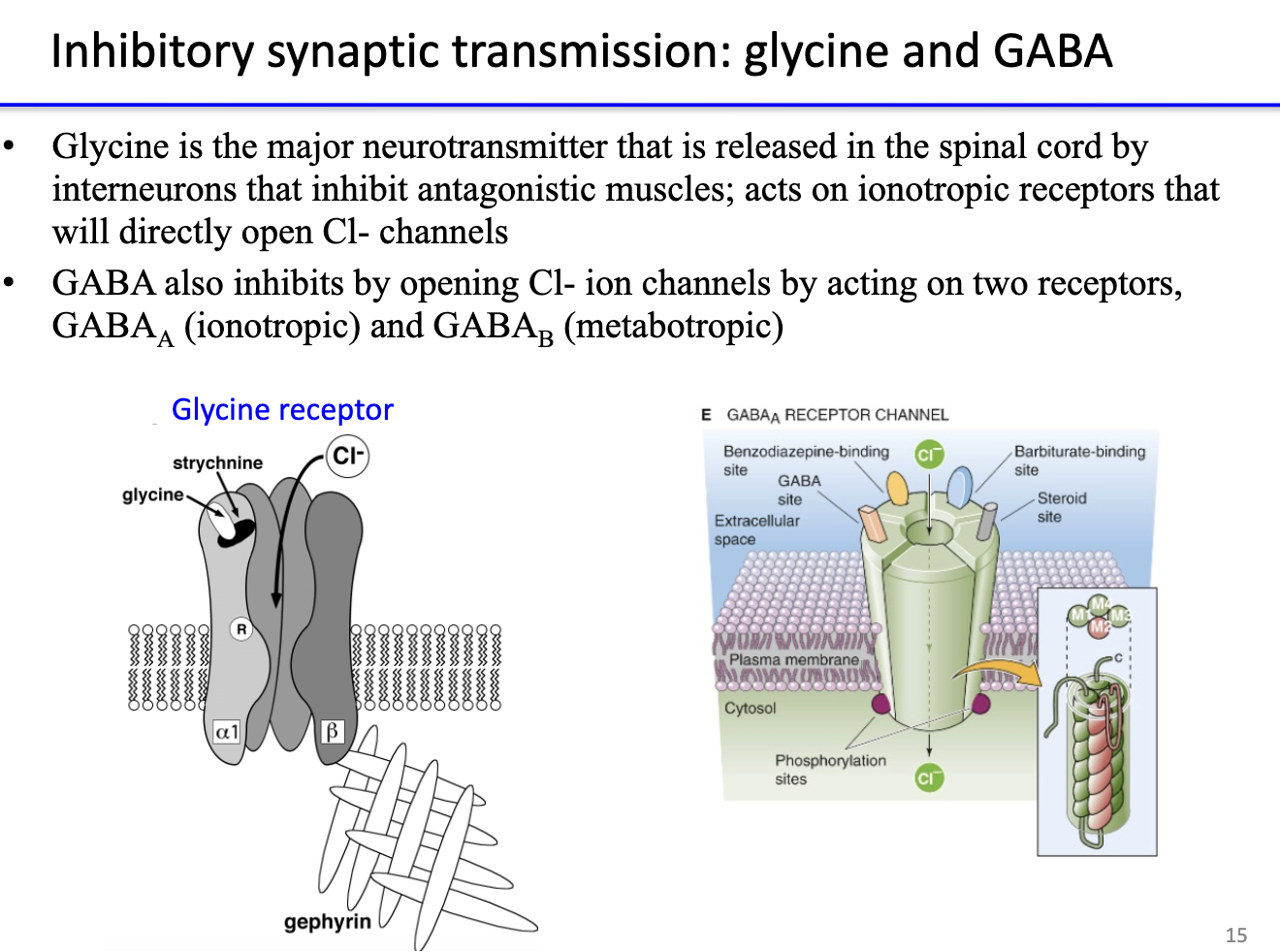
How are neurotransmitters removed from the synaptic cleft?
Reuptake: transporters move neurotransmitters back into presynaptic terminal.
Glial uptake: glial cells absorb transmitter → convert to precursor form for reuse.
Ensures signal termination and recycling of neurotransmitters.
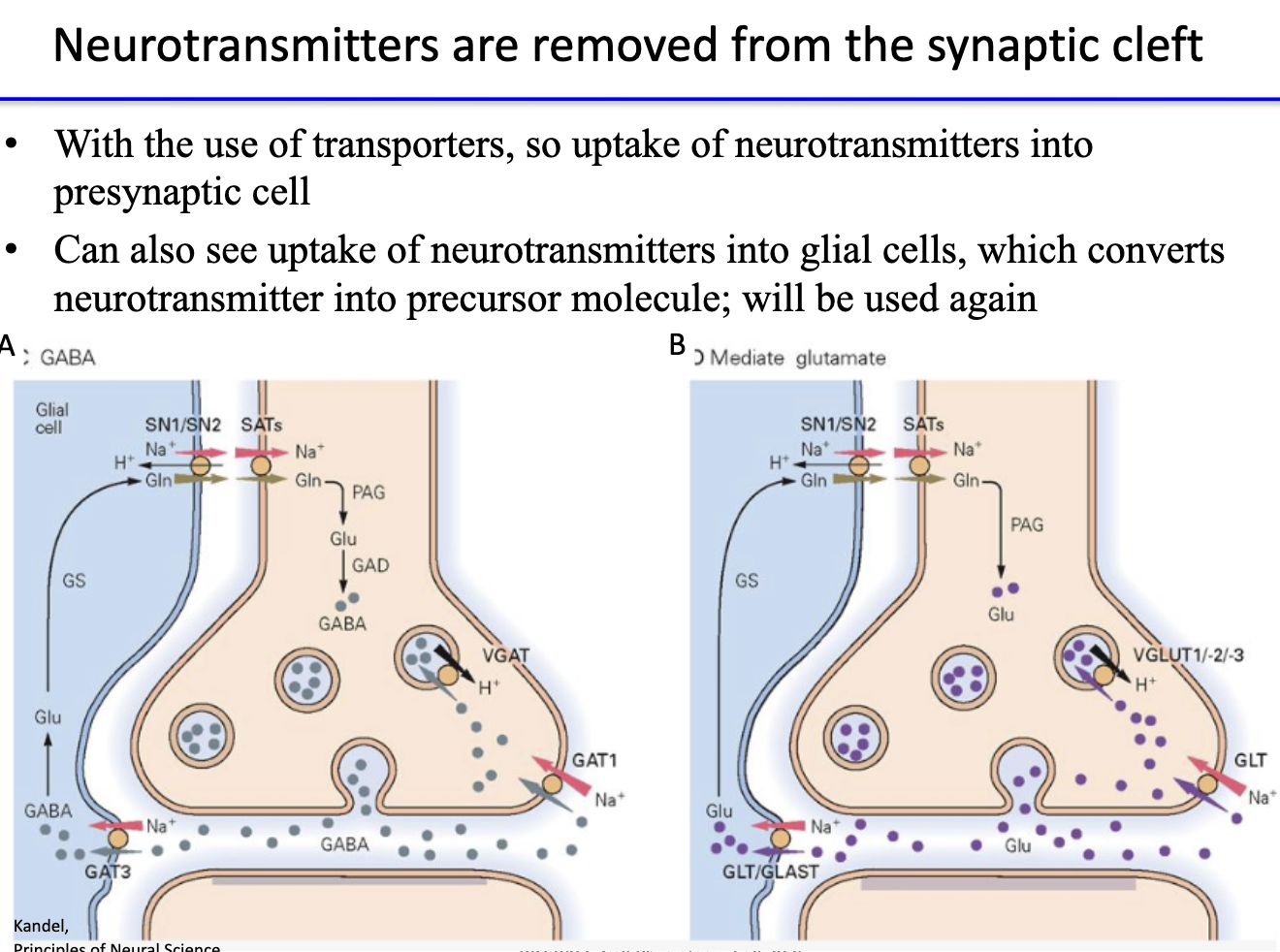
How can drugs alter synaptic transmission?
Alter synthesis, storage, transport, or release of neurotransmitters.
Modify receptor interaction (agonist/antagonist effects).
Influence reuptake or degradation mechanisms.
Replace deficient neurotransmitters with substitutes.
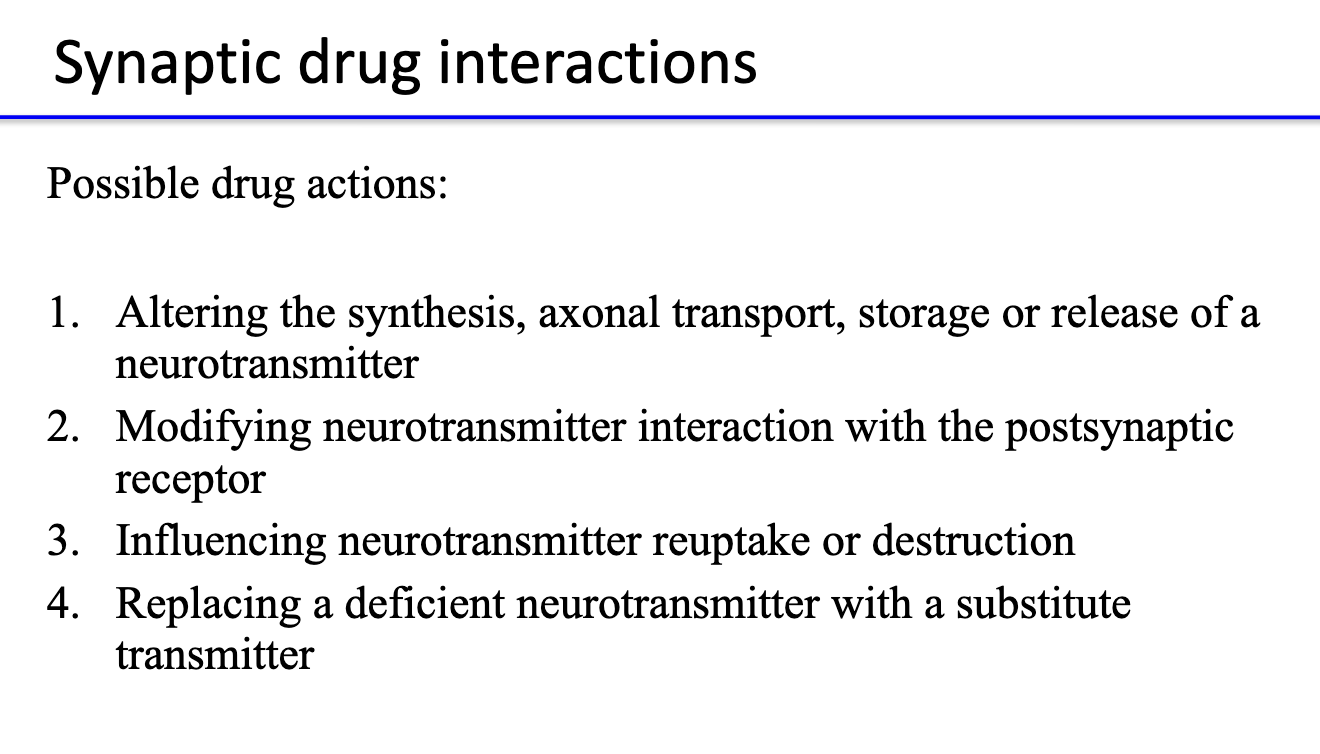
How does botulinum toxin affect neurotransmission?
Produced by Clostridium botulinum.
Cleaves SNARE proteins → prevents acetylcholine release at neuromuscular junction.
Causes flaccid paralysis (muscle cannot contract).
Used therapeutically/cosmetically to relax muscles (e.g., Botox).
